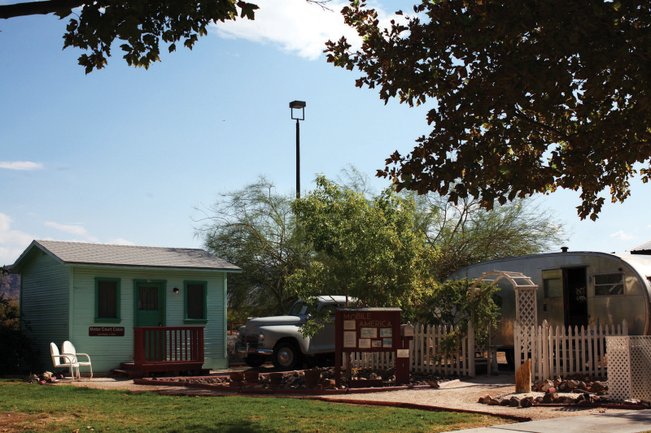
Photo courtesy of Jack LeVine and VeryVintageVegas.com
You get involved in historical preservation because you believe that you can help make a difference, because you believe that our history is more than Bugsy Siegel and the Mob, because you believe that our history matters, because you know that cultural tourism matters and without historic homes there is no cultural tourism.
But most of all you get involved because you know that the continued destruction of our early 20th Century history means that we as Las Vegans hold the real history of our town in such little regard that the continued destruction of it for more McOffices is not only wrong but offensive.
If you believe that our history matters, if you believe that our pioneer families should be celebrated (because without them this metropolis of the 21st Century that we have become would not exist), if you believe that cultural tourism is important to the fabric of our community then now is the time to stand up. Think of every town and city you have ever visited and what do they have common? An old town, a historic district, tours and an understanding of the pioneering roots that made that town matter.
History is what binds us to our community. The majority of people who now live in Las Vegas have come from out-town, from someplace else. Home is always going to be where they are from until we give them a reason to invest in our community. History is what helps them invest in our community. It shows that while we may be a young town we value the contributions and the sacrifices of the families who carved a community out of a unforgiving desert.
If we, as natives and long-time residents, don't value our history how can we expect new arrivals to do so.
We have a chance as a community to come together and tell the City of Las Vegas that our history matters.
On Nov. 5th, the City of Las Vegas will decide the fate of the Charles "Pop" and Delphine "Mom" Squires home. Who were the Squires?
Charles "Pop" Squires arrived before the land auction and set about starting a bank and a hotel in anticipation of both being needed by the time the land auction would happen.
After the success of the land auction, he sent for his wife and family to join him. He started the first newspaper, "The Las Vegas Age". His wife, Delphine, was a founder of the womens civic organization, The Mesquite Club. For over 50 years the Squires were an important family in the fabric of Las Vegas.
Their house still stands in the historic district near the original Las Vegas High School. But developers want to bulldoze it and build what else, a McOffice, on the site and adjoining property.
Now is the time to stand up and say "ENOUGH!' to the continued destruction of our history, our neighborhoods and our community.
Write or call Mayor Oscar Goodman and the members of the Las Vegas City Council: Gary Reese, Lois Tarkanian, Steve Wolfson, Ricky Barlow, Larry Brown and Steve Ross and tell them that you don't want the Squires home to be torn down.
The City Council meets on November 5th to vote on the matter.
Las Vegas City Council
City Hall, Tenth Floor
400 Stewart Avenue
Las Vegas, NV 89101
Phone: (702) 229-6405
Fax: (702) 382-8558
Business Hours: Monday to Friday, 8 a.m. to 5 p.m.
The developers are open to the idea of moving the house but only if someone else will pay for it. The bottom line is that the house should not be moved nor should it be destroyed. It should remain in the historic Las Vegas High School neighborhood where it can be appreciated for years to come by residents and tourists alike as part of the history of Las Vegas.



